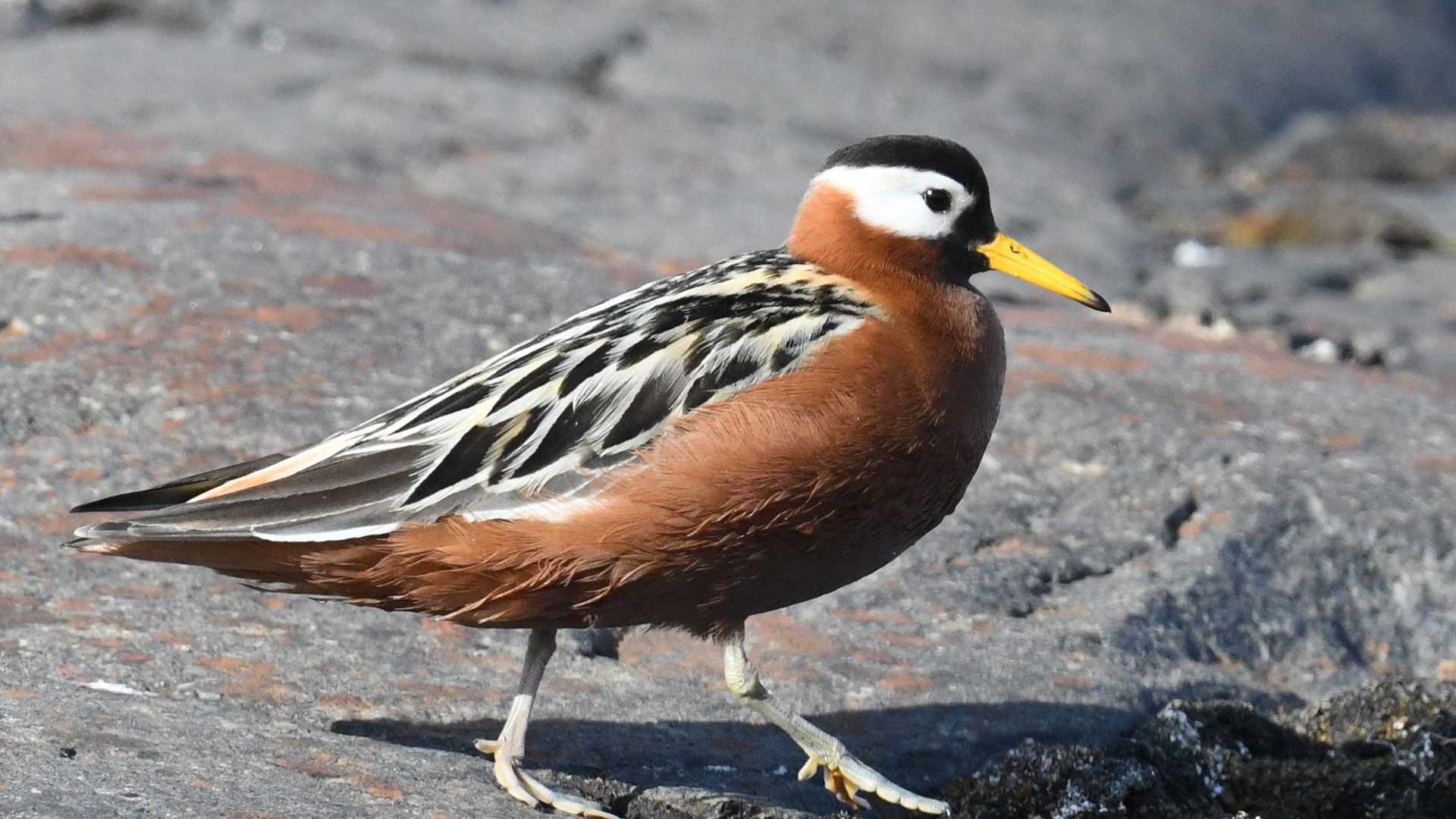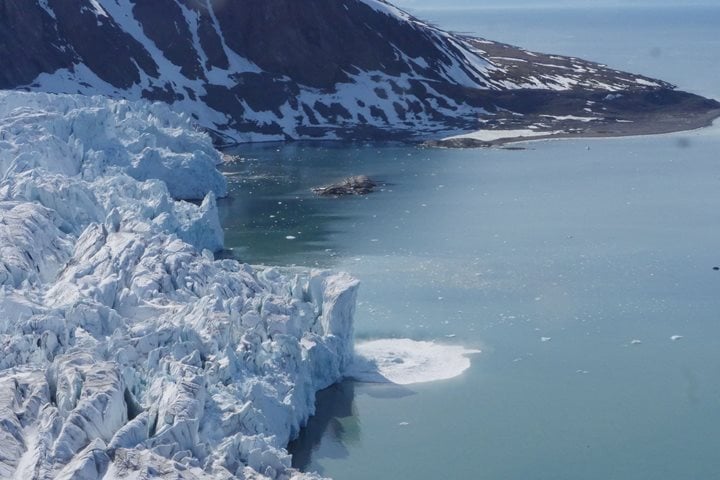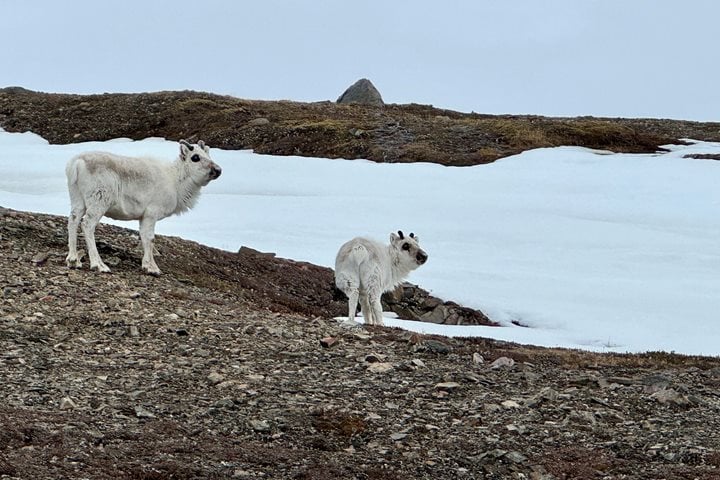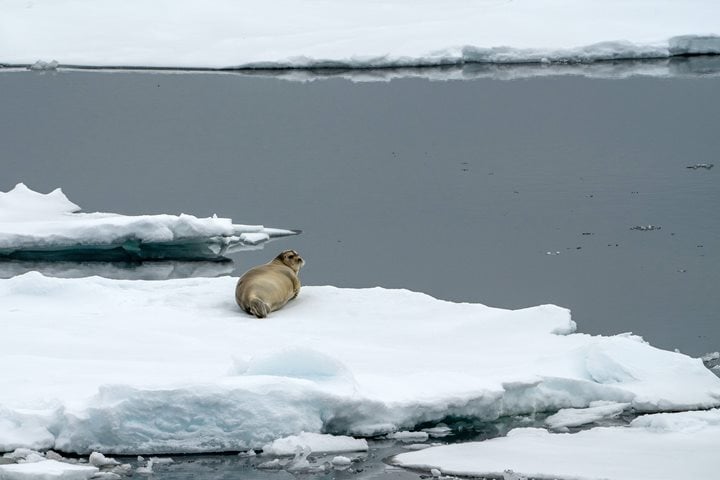Guests aboard National Geographic Explorer visited the remote shores of Russebukta, Svalbard. Our guests departed the ship via Zodiac and were greeted with warm and sunny weather. Once ashore, expedition guides provided a variety of hikes—an Arctic bird walk, nature photography class, and longer hikes. We spotted numerous species of migrant birds returning from warmer winter regions to the south. Our bird expert, Jamie, was the first to identify red phalaropes (Phalaropus fulicarius), which are an interesting species for several reasons. Unlike many species of birds, the female red phalaropes exhibit a flamboyant red coloration during the breeding season. Females also compete for males, who end up caring for the eggs until they hatch.
The tundra ecosystem is dominated by grass and moss that provide food for an endemic subspecies of reindeer or caribou. The Svalbard reindeer (Rangifer tarandus platyrhynchus) is the smallest form of reindeer, and our guests watched as they fed on the tundra vegetation. As they feed, they provide an ecosystem service by opening up room for new growth of plants and lichens. The highlight for many guests was a playful Arctic fox (Alopex lagopus) that we spotted running, leaping, and hunting near a recently melted lake.









